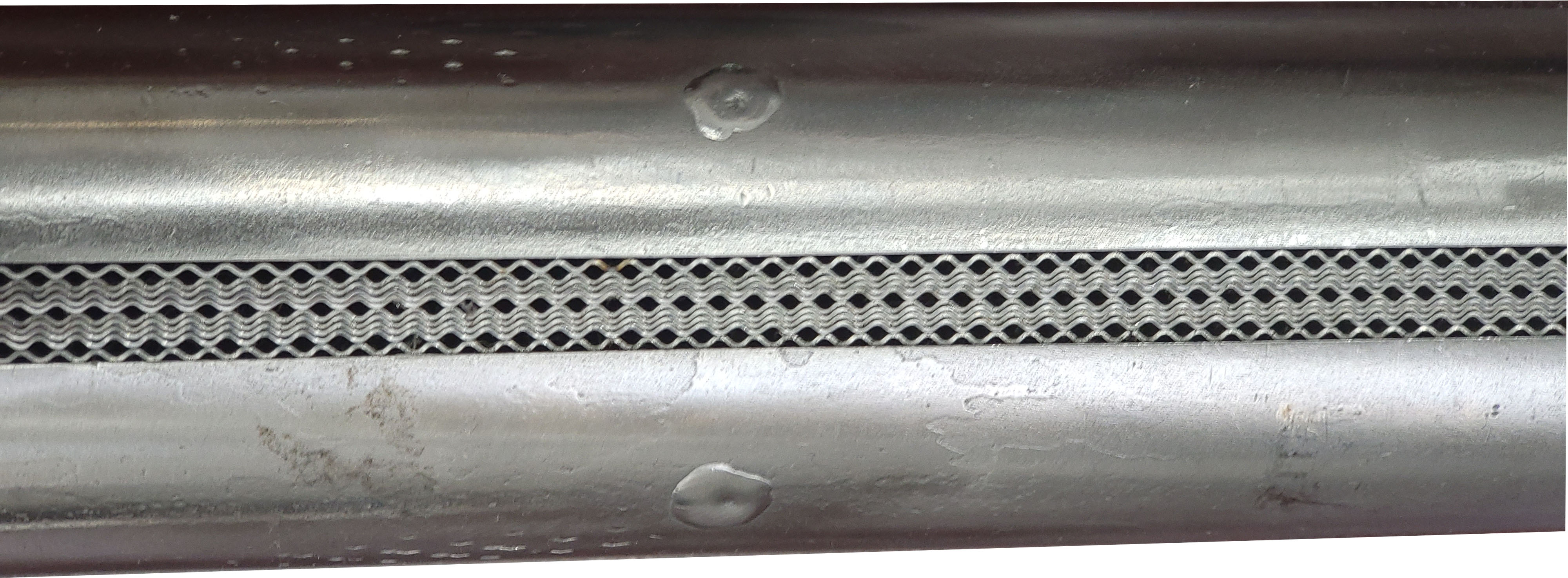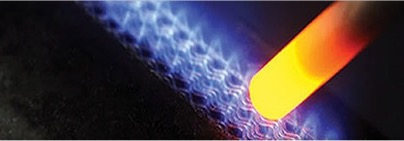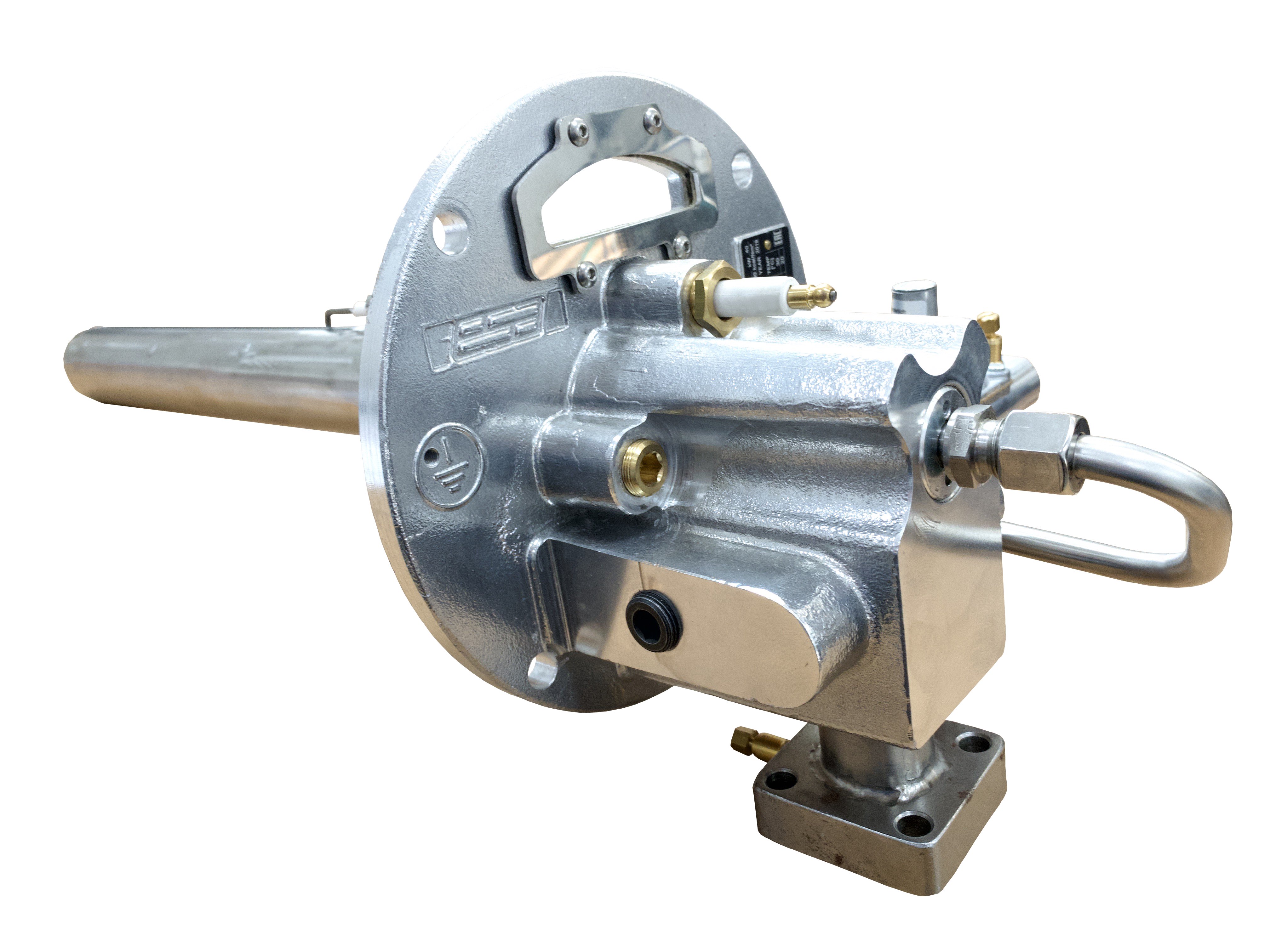What is a Ribbon Burner?
A ribbon burner is a type of premix, direct-fire burner typically used in low temperature applications such as air heating, bakery, sterilizing, brazing, and packaging. The term “premix” refers to a process of creating a gas and air mixture, at the proper ratio, which populates the flame tube prior to ignition (premix is contrasted with nozzle-mix, wherein gas and air are only mixed together in the nozzle just prior to ignition). A direct-fire burner is one that fires into an open furnace chamber; the products of combustion (hot gases) come in direct contact with the product being heated.
Ribbon burners take their name from the shape and pattern of the flame screen. Specially designed metal assemblies create a series of small orifices for the premixed gas and air to pass through as ignition occurs. These metal assemblies resemble ribbon, as you can see from the above photo. A ribbon burner may be oriented to direct flame towards the left, towards the right, or facing up.
What are some advantages to using Ribbon Burners?
Ribbon burners are popular because they produce very steady, even heat, regardless of the presence of recirculating fans. Precise ratio control in the mixer can avoid accidental adjustments from throwing the burner out of tune, and some models boast multiple zones of control along the length of the burner.
Depending on the manufacturer, a burner might be ordered with a 16 inch ribbon length, or a ribbon length of over 5 feet. It’s also worth noting that ribbon burners are supplied in any number of specialty shapes, not just straight lines. We’ve seen examples of zigzags, rectangles, even stars.
What maintenance do Ribbon Burners require?
Like all direct spark ignited burners, the electrode used to light (and possibly also to sense flame from) a ribbon burner is a consumable spare part. Electrode rods should be inspected for soot and/or rust build-up regularly and cleaned with emery cloth or steel wool. Spares should be available in case an electrode is too worn or damaged for cleaning.
Overall combustion system preventative maintenance, tuning, and inspections will help ensure the ribbon burners on your furnace are receiving the correct gas and air pressures for optimum performance.
Unlike most other kinds of burner, the nature of a ribbon burner means the small holes in the ribbon may become clogged over time. The most common reason this happens is due to some bits of the furnace “work” falling down onto ribbon burners firing upward. You can usually clean the ribbon with compressed air, but if you cannot clear the debris this way, or if there is some damage to the ribbon, you may opt to replace the flame tube.
Can you recommend a Ribbon Burner manufacturer?
We can! ESA’s AB & ABM models are well known and loved by bakeries the world over. The ABM recently received an upgraded mixing flange, which reduces the weight by 5 lbs while adding a standard peep sight, a divergent cone inside the flange for venturi mixing, and the addition of a flexible plastic impulse line suitable for max. 250°F.
If you’d like more information about ribbon burners from ESA, please don’t hesitate to contact us.
For Automation
Please visit olstrad.com to learn more about our automation processes!















